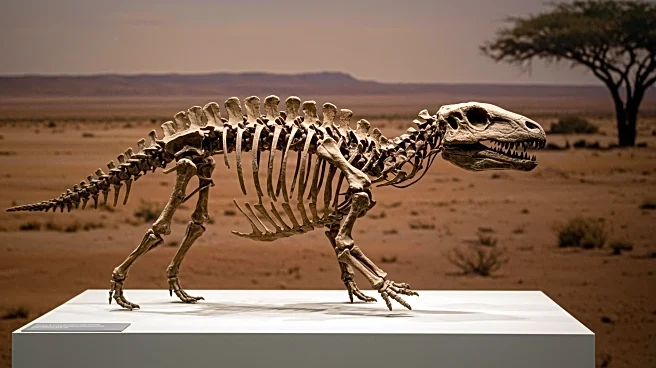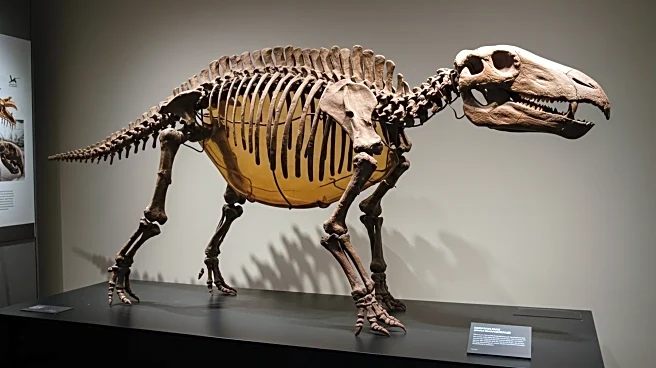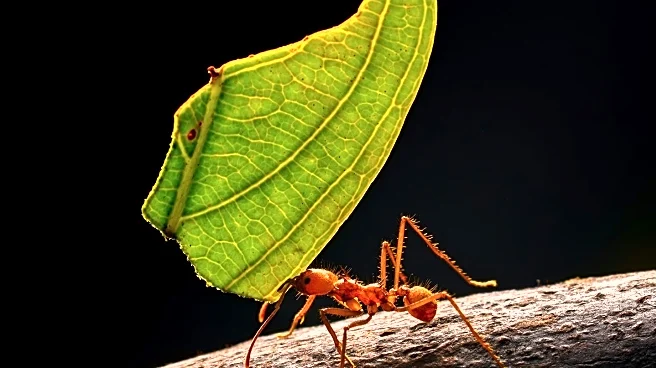Rapid Read • 8 min read
Recent research published in the Australasian Journal of Palaeontology has unveiled a detailed portrait of an ancient polar ecosystem during the Early Cretaceous period, approximately 120 million years ago. The study highlights how various dinosaur species, including ornithopods and theropods, adapted to survive in the harsh polar environment of what is now southern Australia and Antarctica. These dinosaurs endured months of winter darkness, sub-zero temperatures, and icy winds, yet managed to thrive in complex ecosystems. The research involved examining nearly 300 microscopic pollen and spore samples from 48 coastal sites in Victoria, revealing a rich vegetation landscape dominated by conifers and ferns.
AD
This discovery challenges previous assumptions that polar regions during the dinosaur age were inhospitable wastelands. Instead, the findings suggest these areas were rich, adaptable environments capable of supporting diverse life forms despite extreme seasonal changes. The study provides a comprehensive view of a polar Cretaceous ecosystem, linking plant fossil records with dinosaur remains. This insight into ancient ecosystems can inform current understanding of biodiversity and adaptation in extreme environments, offering valuable lessons for modern ecological and climate studies.
The research opens avenues for further exploration into how ancient ecosystems functioned under extreme conditions, potentially offering insights into current climate change impacts. Scientists may continue to investigate the role of flowering plants in transforming these ecosystems and how such changes influenced dinosaur diets and behaviors. Additionally, the study may prompt further paleontological expeditions to uncover more about the biodiversity and ecological dynamics of polar regions during the Cretaceous period.
The study highlights the resilience and adaptability of life in extreme environments, which could have implications for understanding how current ecosystems might respond to climate change. The transition from fern-dominated undergrowth to flowering plants reflects broader ecological shifts driven by warming climates and elevated atmospheric carbon dioxide levels, offering parallels to contemporary environmental changes.
AD
More Stories You Might Enjoy










